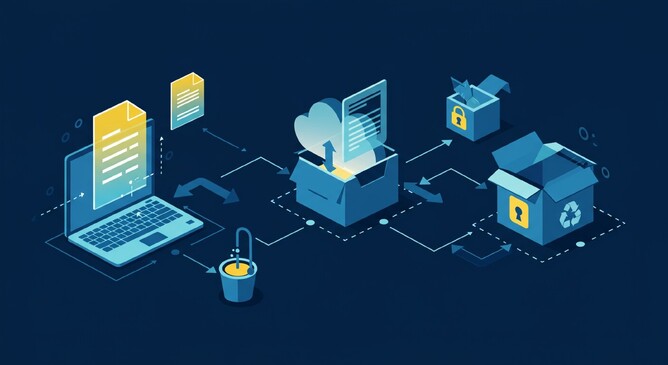Every digital file your business creates — whether it’s a client proposal, invoice, design draft, or HR record — goes on a journey. Managing this lifecycle well ensures your files remain secure, accessible, and valuable throughout their existence.
Here’s what the lifecycle of a digital file typically looks like — and how to manage each stage effectively.
Creation
The lifecycle begins when a file is created: a Word document, Excel spreadsheet, image, or scanned PDF.
Best practices:
Use standard naming conventions
Save to secure, backed-up locations instead of desktops
Add basic metadata (like project names or dates) to improve organisation later
Use and Collaboration
Files are rarely static. They’re edited, shared, and collaborated on.
Best practices:
Use version control so multiple edits don’t overwrite important information
Limit sharing to secure platforms (avoid emailing sensitive files unnecessarily)
Control access so only the right people can view or edit
Storage
Once the file is no longer actively in use, it should be stored properly.
Best practices:
Organise files in logical, well-structured folders or document management systems
Use cloud or hybrid storage solutions for accessibility
Encrypt sensitive files and back up regularly
Retention
When files are rarely accessed but must be retained, they should move into an archive.
Best practices:
Store in long-term, stable formats (like PDF/A or TIFF)
Index archives with searchable metadata
Separate archives from day-to-day active storage for efficiency
Disposal
Eventually, every file reaches the end of its lifecycle. At this stage, secure disposal is critical.
Best practices:
Use secure deletion tools that permanently wipe digital traces
For physical media, use certified destruction services
Document the disposal process for compliance reporting
Why It Matters
Mismanaged files lead to wasted time, compliance risks, and potential data loss. A clear lifecycle management approach ensures that information is:
Easy to find when you need it
Secure from unauthorised access
Retained only as long as necessary
Archived or destroyed responsibly
How Creatipix Helps
At Creatipix, we help businesses streamline document and file management systems — from scanning and digital archiving to secure storage and disposal. Our solutions are built to ensure your information is organised, compliant, and future-proof.
Want to take control of your digital files?
Contact the team at Creatipix today to discuss lifecycle management strategies that work for your business. +64 6 876 5575

